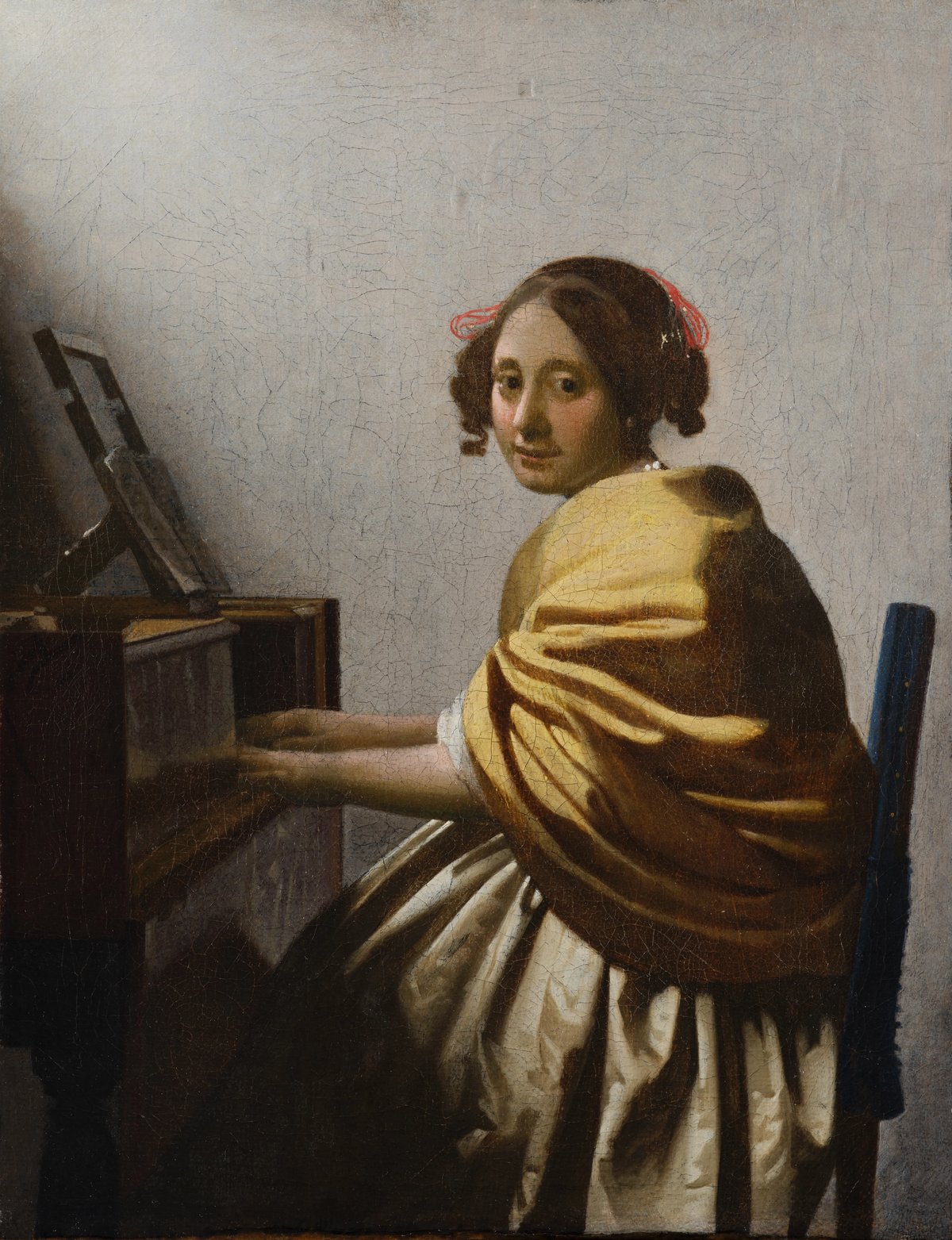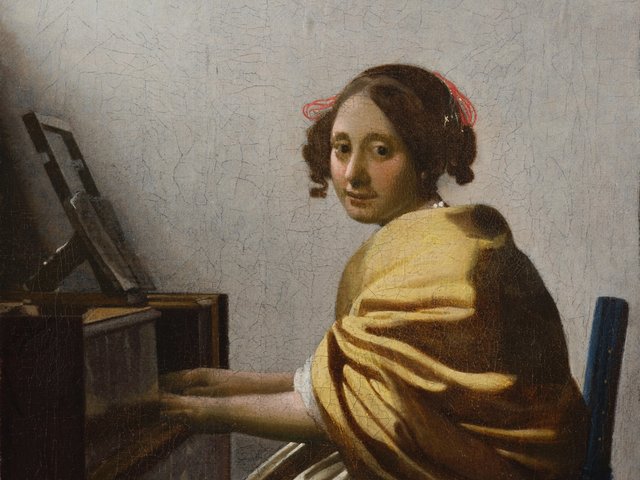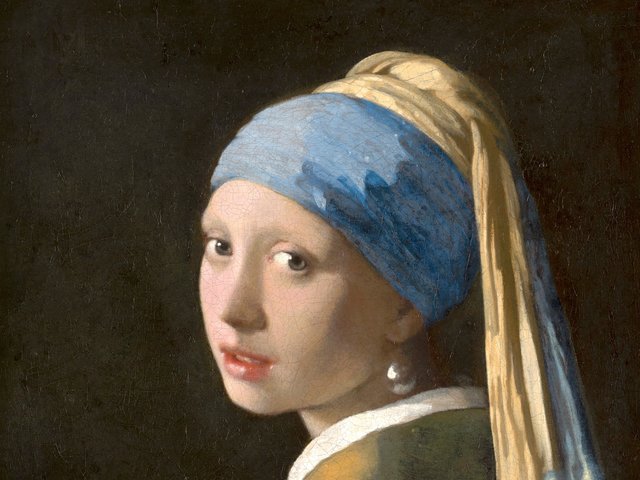The newly authenticated Vermeer painting, Young Woman Seated at the Virginals, could sell for considerably more than its £3m estimate when it is offered at Sotheby’s in London on 8 July. It is a small work, just 10 x 8 inches, and is not one of the artist’s masterpieces. Yet already there are suggestions it could make £10m to £20m, and possibly even more. The surprisingly low estimate may be due to Sotheby’s desire to attract as many bidders as possible.
The chance to buy a Vermeer comes up extremely rarely. Only 35 other authentic paintings are known, and this is the only one remaining in private hands. The last Vermeer on the market was The little street. This was bought in when it came up for auction in 1921, but soon afterwards was purchased by Henry Deterding and immediately presented to the Rijksmuseum.
Young Woman Seated at the Virginals has had a chequered history. It was thrown out of the oeuvre more than half a century ago and has been hidden away in a private collection. News that the “rediscovered” picture might be authentic was first revealed three years ago by The Art Newspaper.
In the 1990s Sotheby’s began advising the painting’s owner, baron Frederic Rolin, and more recently a committee of experts was set up to examine the picture. Its most sceptical member was Frits Duparc, the director of the Mauritshuis in The Hague, who three years ago told us that, based on a photograph, “I cannot believe it is a Vermeer.” One particular problem is the yellow shawl, which is so poorly painted that it must have been done by a different hand. This still remains a mystery: why did Vermeer almost complete the work, leaving just the shawl unpainted?
Last month, Duparc admitted that he has now changed his mind. Speaking to The Art Newspaper, he said, “I was the last one on the committee to agree, and for a long time I had very strong doubts.” The other committee members are four conservators (Martin Bijl, Libby Sheldon, Jørgen Wadum and Arie Wallert), two members of the Rembrandt Research Project (Ernst van de Wetering and Marieke de Winkel) and Sotheby’s Gregory Rubinstein. Interestingly, although all the members of the committee are extremely well informed on the period, none of the top Vermeer art historians are on it. Most of the Vermeer experts have now seen the picture and accept it, but a few have yet to give their verdicts.
When the Rolin picture was recently cleaned of later overpaint, the quality of much of the original was revealed, including subtle effects of irregularities on the back plastered wall, somewhat reminiscent of the realistic wall depicted in The Milkmaid (Rijksmuseum). Speaking of the Rolin picture, Mr Duparc believes that “only Vermeer could paint a wall like that.”
Pigment examination also suggests that it is authentic. The presence of lead-tin yellow shows that the picture is 17th century. Green earth in the flesh tones was unusual for Dutch Golden Age artists, but is regularly found in Vermeer’s work. Ultramarine, from lapis lazuli, was also found, an expensive pigment which was extensively used by Vermeer.
Equally interesting is that the coarse canvas used in the Rolin painting is not only exactly the same size as Vermeer’s Lacemaker (Louvre) of around 1670, but is of the same type and probably from the very same bolt of cloth. The ground of these two works is also the same.
Sotheby’s dates the painting to around 1670, partly on account of the young woman’s fashion. The costume specialist De Winkel pointed out that the hairstyle and ribbons were only fashionable for a couple of years, around 1670 (fashions changed then just as quickly as they do today). This date means that the picture is several years earlier that Vermeer’s two other compositions of virginal players, now in London’s National Gallery: Woman Seated at the Virginals and Woman Standing at the Virginals (both around 1673). If the 1670 dating is accepted for the Rolin picture, then it may have been a “first exploration” before the London paintings.
However, Duparc told us that he dates the Rolin picture to 1675, the year of Vermeer’s death. This would mean it is an independent picture, made after the artist’s work had declined in quality. It might explain why the shawl was unfinished, although the fashion of the hair and the similarities to the Lacemaker canvas strongly support the earlier date.
Baron Rolin died two years ago, and last month his family broke their silence, and spoke about the painting to The Art Newspaper. One of the children explained: “For 40 years the Vermeer followed our father, first to New York when he lived there, and then on his return to Belgium. It was normally kept in a secure store, but occasionally he would bring it out to look at and enjoy. But he never hung it at home.” The family added that their father was always convinced of its authenticity—“It was really a crusade for him.”
• Young Woman Seated at the Virginals will be on view at Sotheby’s New York until 9 May and then again from 22 to 27 May, and in London, 2-7 July.




